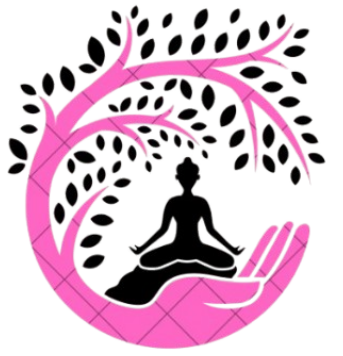Natural Ways to Relieve Sciatica Without Medication
Addressing sciatica pain naturally can be an empowering journey toward holistic well-being. Through gentle exercises, yoga, and strategic stretching, individuals can alleviate nerve pressure and bolster core strength. Complementing physical practices with a diet rich in anti-inflammatory foods and exploring herbal remedies enhances recovery. Incorporating alternative therapies like acupuncture, massage, and mindfulness fosters relaxation, offering an all-encompassing strategy to manage discomfort. What are these natural approaches, and how can they transform one’s pain management?
Understanding the Causes and Symptoms of Sciatica
Sciatica, a condition characterized by pain radiating along the sciatic nerve path, often arises from underlying issues such as herniated discs, spinal stenosis, or degenerative disc disease. Sciatica triggers can include prolonged sitting, poor posture, and carrying excess weight, which contribute to nerve compression. A holistic approach to understanding these causes highlights the importance of addressing lifestyle factors. Incorporating anti-inflammatory herbal remedies may help alleviate symptoms, offering a natural course of action. For instance, turmeric and willow bark are known for their potential to reduce inflammation and promote nerve health. Additionally, maintaining a balanced diet and practicing stress-reduction techniques are essential components in managing sciatica. This lifestyle focus aims to mitigate sciatica triggers and promote overall well-being.
Benefits of Gentle Exercises for Sciatica Relief
Incorporating gentle exercises into a daily routine can serve as a powerful complement to natural remedies and lifestyle adjustments for individuals seeking sciatica relief. Such exercises focus on enhancing core strength and improving spinal alignment, both vital factors in alleviating the pressure on the sciatic nerve. By engaging in low-impact movements, individuals can foster a supportive environment for the body’s natural healing processes without resorting to medication. Core strength exercises, in particular, help stabilize the spine, reducing strain and promoting better posture. Meanwhile, gentle stretching and movements enhance flexibility, encouraging a more aligned spine. This holistic approach, when integrated with herbal remedies and mindful lifestyle changes, can offer substantial relief, supporting overall health and well-being for those suffering from sciatica.
Exploring Yoga Poses to Alleviate Sciatica Pain
Incorporating yoga into a wellness routine offers a holistic method to ease sciatica pain through targeted stretching techniques that focus on releasing tension and improving flexibility. The gentle practice of yoga not only addresses physical discomfort but also integrates breathing and relaxation benefits, promoting a sense of calm and balance. By prioritizing these mindful movements, individuals can cultivate a lifestyle that supports overall well-being and alleviates the discomfort associated with sciatica.
Targeted Stretching Techniques
While exploring holistic approaches to alleviate sciatica pain, yoga emerges as a gentle yet effective practice. Focusing on targeted stretching techniques, specific yoga poses can help release tension in the hip flexors and provide much-needed relief. The hip flexor stretches, such as the pigeon pose, aim to loosen tight muscles that may contribute to sciatic discomfort. Additionally, addressing the piriformis muscle is essential, as tightness here often aggravates the sciatic nerve. By engaging in poses like the seated forward bend, practitioners can facilitate a piriformis muscle release, thereby easing nerve pressure. These stretching techniques not only promote flexibility but also support a balanced lifestyle by encouraging mindfulness and body awareness, offering a natural pathway to sciatica pain management.
Breathing and Relaxation Benefits
A harmonious blend of breathing and relaxation techniques can greatly enhance the alleviation of sciatica pain through yoga. Deep breathing serves as a cornerstone, promoting oxygen flow and reducing tension in affected areas. This holistic approach emphasizes the union of mind and body, allowing individuals to engage in mindful relaxation. Incorporating specific yoga poses, such as the Child’s Pose or Pigeon Pose, helps in releasing trapped tension along the sciatic nerve. These poses, combined with controlled breathing, foster a calming environment, reducing stress and enhancing overall well-being. Additionally, mindful relaxation encourages the body to enter a restorative state, which can contribute to the natural healing process. This lifestyle focus on breathing and relaxation offers a gentle yet effective remedy for sciatica discomfort.
The Role of Stretching in Reducing Sciatica Discomfort
Stretching emerges as a gentle yet effective method to alleviate sciatica discomfort, focusing on improving flexibility and circulation. By incorporating specific techniques that target muscle groups such as the piriformis, hamstrings, and lower back, individuals can promote natural healing and reduce inflammation. This holistic approach not only supports physical well-being but also complements lifestyle adjustments and other natural therapies for long-term relief.
Stretching Techniques Overview
Many individuals find relief from sciatica discomfort through a holistic approach that incorporates stretching techniques. Emphasizing lifestyle modifications, these techniques can be divided into dynamic and static stretching. Dynamic stretching involves active movements that gently increase the range of motion, warming up muscles and enhancing circulation. This type of stretching prepares the body for more vigorous activities, potentially reducing the risk of exacerbating sciatic pain. On the other hand, static stretching focuses on holding specific positions that allow muscles to slowly lengthen and relax. This method can help alleviate tension and promote muscle flexibility. By integrating both dynamic and static stretching into daily routines, individuals may experience a reduction in discomfort associated with sciatica, complementing other natural remedies for holistic wellness.
Targeted Muscle Groups
Understanding the specific muscle groups that benefit from targeted stretching can illuminate the path toward easing sciatica discomfort. Key areas include the piriformis, hamstrings, and hip flexors, which, when effectively stretched, can relieve pressure on the sciatic nerve. These stretches enhance muscle strengthening, supporting the body’s natural alignment and promoting posture alignment. A holistic approach emphasizes not only the physical aspect but also the importance of integrating stretching into daily routines to foster lasting relief. Stretching these targeted muscles harmonizes with herbal remedies and lifestyle adjustments, creating a thorough regimen for managing sciatica. Consistent practice aids in maintaining flexibility, thereby reducing the likelihood of recurring pain, while aligning the body’s natural posture, paving the way for a balanced and pain-free existence.
Dietary Adjustments to Support Sciatica Recovery
When seeking to alleviate the discomfort of sciatica, incorporating specific dietary adjustments can play an essential role in recovery. Emphasizing anti-inflammatory foods such as leafy greens, berries, and fatty fish can help reduce inflammation, a common contributor to sciatic pain. These foods, rich in antioxidants and omega-3 fatty acids, support the body’s natural healing processes, offering a holistic approach to managing sciatica. Additionally, the importance of hydration cannot be overstated. Proper hydration maintains joint and muscle function, facilitating the transport of nutrients essential for recovery. Consuming an adequate amount of water daily can also help flush out toxins, further supporting the body’s healing capabilities. Overall, mindful dietary choices can profoundly impact the journey to relieving sciatic discomfort.
Herbal Remedies and Supplements for Sciatica Relief
Exploring herbal remedies and supplements can offer a natural complement to conventional treatments for sciatica relief. A holistic approach recognizes the potential benefits of integrating herbal infusions, such as turmeric or ginger tea, known for their anti-inflammatory properties. These infusions may help reduce nerve irritation and support overall well-being. Additionally, incorporating natural supplements like magnesium and omega-3 fatty acids could enhance nerve health and alleviate discomfort associated with sciatica. Magnesium is reputed for easing muscle tension, while omega-3s are praised for their anti-inflammatory effects. By embracing these herbal and supplemental strategies, individuals may find a lifestyle-focused path to managing sciatica symptoms. However, consulting with a healthcare provider is crucial to guarantee these remedies align with individual health needs.
Acupuncture and Acupressure for Sciatica Pain Management
Although conventional treatments often focus on medication and physical therapy, acupuncture and acupressure present a holistic avenue for managing sciatica pain. These ancient practices emphasize balancing the body’s energy, or qi, through meridian therapy. In acupuncture, thin needles are inserted into specific meridians to stimulate the flow of energy, potentially alleviating the discomfort associated with the sciatic nerve. Similarly, acupressure involves applying pressure to trigger points, which can help release tension and promote healing. By addressing the root causes of pain and enhancing overall energy flow, these methods offer a natural complement to traditional sciatica treatments. Embracing acupuncture and acupressure might not only provide relief but also encourage a lifestyle focused on balance and well-being.
The Impact of Massage Therapy on Sciatic Nerve Pain
Beyond the practices of acupuncture and acupressure, massage therapy emerges as a soothing remedy for alleviating sciatic nerve pain. This holistic approach focuses on promoting natural healing by targeting specific pressure points. Skilled therapists employ various massage techniques to release tension and improve circulation, which can help reduce inflammation around the sciatic nerve. Techniques such as deep tissue massage and Swedish massage are tailored to alleviate discomfort and promote relaxation. By focusing on the body’s natural ability to heal, massage therapy offers a gentle alternative to medications. The practice encourages a lifestyle shift towards wellness, emphasizing balance and harmony. Integrating regular massage sessions into one’s routine can greatly enhance overall well-being and provide lasting relief from sciatic nerve pain.
Mind-Body Techniques to Help Cope With Sciatica
In the pursuit of natural relief from sciatica, mind-body techniques offer a holistic approach that integrates mental and physical well-being. Mindfulness meditation is a powerful tool, encouraging individuals to focus on the present moment, promoting relaxation, and reducing the perception of pain. By cultivating awareness, those suffering from sciatica can develop a deeper connection to their bodies, which may alleviate stress and tension. Similarly, guided imagery allows individuals to visualize peaceful settings or healing processes, fostering a sense of calm and control over their discomfort. This practice can serve as a mental escape from pain, contributing to a more balanced lifestyle. Incorporating these techniques into daily routines can complement other natural remedies, supporting a thorough strategy for managing sciatica.
Frequently Asked Questions
What Lifestyle Changes Can Prevent Sciatica From Recurring?
In addressing recurring sciatica, one should consider a holistic approach. Incorporating balanced exercise routines and dietary changes can be effective. A lifestyle focus with added herbal remedies may further support overall health and prevent future episodes.
How Long Does It Typically Take to See Improvements With Natural Remedies?
Improvements using self-care techniques and a holistic approach, including herbal remedies and lifestyle focus, can vary. Typically, individuals might notice healing time within weeks, though persistence and consistency in natural methods can influence the speed of recovery.
Can Poor Posture Contribute to Sciatica, and How Can It Be Corrected?
Poor posture can indeed contribute to sciatica by affecting spinal alignment. Posture correction is essential, focusing on ergonomic adjustments, strengthening exercises, and mindful practices. A holistic approach includes herbal remedies and lifestyle changes to promote overall spinal health.
Are There Any Specific Sleeping Positions That Help Alleviate Sciatica Pain?
Certain sleeping positions can alleviate sciatica pain by reducing pressure on the sciatic nerve. Incorporating sleeping aids, like body pillows, and careful mattress selection, aligned with a holistic approach, can complement herbal remedies and lifestyle adjustments.
How Can Ergonomic Adjustments at Work Reduce Sciatica Symptoms?
Ergonomic adjustments, such as using an ergonomic chair and optimizing desk height, contribute to a holistic approach in reducing sciatica symptoms. This lifestyle focus, complemented by herbal remedies, can promote overall well-being and comfort.





